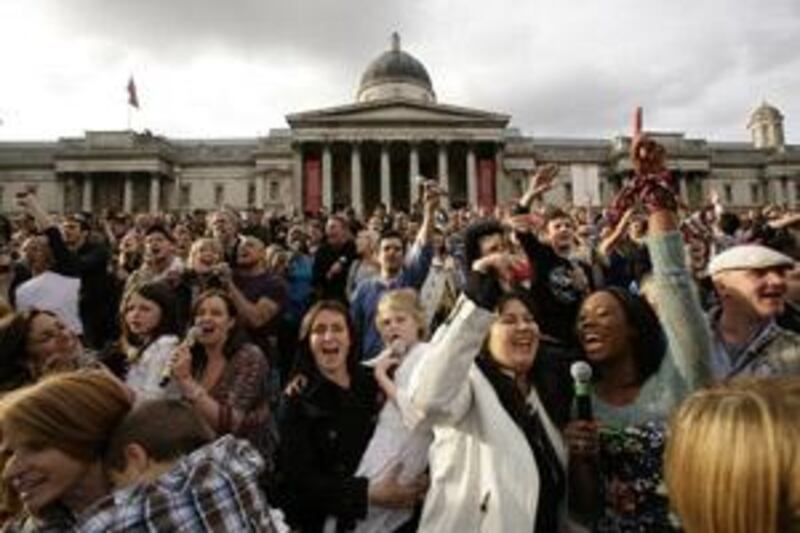"Flash mobs seek to create spectacle and the response of non-participants is an important part of the endeavour," says the New York-based marketing consultant Tony Writer. Those "non-participants" were gobsmacked by something unusual that happened at the South Street Seaport near the Brooklyn Bridge in downtown Manhattan recently. At 12.30pm on Wednesday September 23, 50 people suddenly emerged from the crowd and burst into tightly choreographed, 1980s-style dance moves.
It was one of a series of "flash mobs" that occurred across America from Dallas to Nashville to promote the remake of the movie Fame. And, yes, some of the dancers were wearing leg warmers. What were they up to? They were exploring the possibilities of a technique made possible by the digital age, but until recently unexploited by commerce. The term "flash mob" was coined by Bill Wasik, an editor at Harper's magazine who organised the first ever flash mob in a store in Manhattan in May 2003. Similar to situationist stunts of the Sixties, a flash mob describes the gathering together of a large group of people who assemble suddenly in a public place - sometimes, like the situationists, with political intent - to perform an unusual action and then quickly disperse.
It was on March 22, 2008, that 25 cities around the world participated in International Pillow Fight Day, the world's biggest flash mob. Five thousand took part in New York alone, pillow fighting each other in the streets after being galvanised into their pointless action by social media sites such as Facebook. At the beginning of this year the promotional possibilities of flash mobs first made the news.
On January 15th, 2009, 350 dancers broke into a spontaneous routine at London's Liverpool Street station to launch T-Mobile's "Life's For Sharing" campaign. Saatchi and Saatchi, the ad agency that arranged the "event", planted 10 hidden cameras throughout the station's rush-hour crowds to film a dance routine that bore a resemblance to the Grand Central Station sequence in the movie The Fisher King, directed by Terry Gilliam. Saatchi put the footage out the following day as a three-minute ad for the UK phone network that ran during Channel Four's Celebrity Big Brother.
Four months later the agency repeated the trick, when thousands of microphones were handed out to a 13,000-strong flash mob that sang karaoke tunes at London's Trafalgar Square. The event was turned into a commercial and ran 48 hours later, during a commercial break between ITV's Britain's Got Talent. Paul Silburn, the man behind both ads, says that he wanted "to create a feeling of spontaneity - an event so memorable people can't help but join in and share it."
"Purists probably would say it violates the anarchic spirit of flash mobbing," says Writer. But that might not matter, says Richard Sunderland, the managing director of Heavenly, a branding agency that represents Vodafone, Sainsbury's, BT, Sky, Sony and the Discovery Channel. "Using flash mobs in commercials marks a shift into participative marking for brands," he says. "It's the idea that brands need engaging ambassadors. The idea is to get people to participate with the brand," says Sunderland. "It actually makes the brand seem less commercial."
According to Sunderland the T-Mobile and Fame flash mobs are trying to make themselves a cultural event rather than a commercial one."It gives the brand more credibility," he says." The brand gives people a platform to enjoy themselves." But it represents a big commitment from the brand in question, says Sunderland. "It's hard to track its effectiveness, outside its obvious PR value" says Sunderland. "The idea of flash mobs is comparatively high-risk. For any event you need the buy-in of local councils and police, you need the infrastructure to brand the event and there's a chance it won't work. You could spend £200,000 and not achieve any commercial objectives. It is too high-risk for many brands."
But despite its risks there is a reason that flash mobs seem particularly attractive to audiences now. "There is a general move from brands towards realism," Sunderland says. "Because of the recession people are not responding to artificial things. That is the order of the day."





